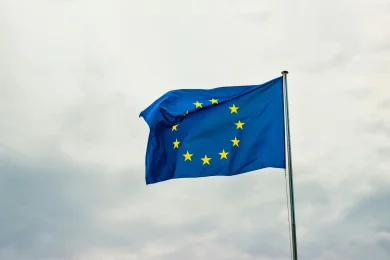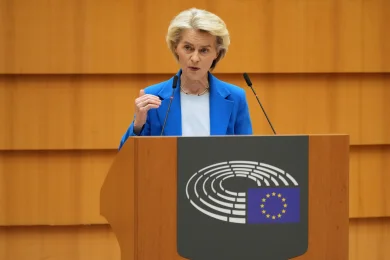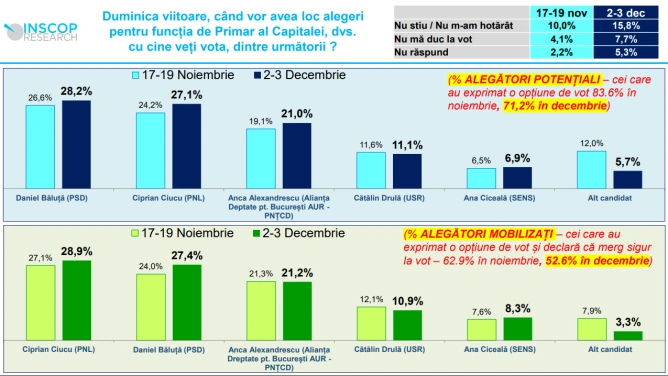
In a world where borders are no longer measured in kilometers, but in megabits, Europe is preparing to raise a new type of shield: a digital, civic, and democratic one. Not made of steel, but of trust, rules, and knowledge. The "European Democracy Shield" (EDS), an initiative announced by Ursula von der Leyen in her 2025 State of the Union address, promises to become the common architecture of European democratic defense.
Disinformation as a Weapon of War In the last two years, almost every electoral round in Europe has been the target of some form of foreign interference. The 2024 European elections were monitored by the European External Action Service (EEAS), which identified over 40 information manipulation campaigns — many orchestrated by Kremlin-affiliated networks. The result: citizens' trust in their vote. The cases are diverse: deepfakes of political leaders, fake accounts amplifying extremist narratives, clone sites spreading fabricated news. In Romania, platforms like TikTok have been accused of allowing coordinated campaigns during the 2024 presidential elections, leading to the initiation of an official investigation based on the Digital Services Act (DSA). But the study shows that the real vulnerability is not technological, but human: younger generations, who consume information almost exclusively from social media, are the most exposed. "One in five young Europeans would accept an authoritarian regime under certain circumstances," warn the authors, emphasizing that democracy can no longer be defended solely by laws — it must be renewed in every generation.
From Reform to Resilience The European Union has undergone a paradigm shift. While in the years of Jean-Claude Juncker the focus was on democratic reform — transparency, ethics, participation — today the emphasis has shifted to democratic protection. The new doctrine of the Commission and the Parliament combines hard legislation with soft measures of education and civic support: The Digital Services Act (DSA) obliges major platforms to reduce systemic risks related to disinformation; The European Media Freedom Act (EMFA) introduces guarantees of editorial independence and rules against political censorship; The Regulation on the transparency of political advertising limits electoral microtargeting and imposes the identification of funding sources; The NIS2 and CER directives strengthen the protection of critical infrastructures — from energy networks to electoral systems. But the problem is not the lack of laws, but their enforcement. Only half of the member states have fully transposed the NIS2 and CER directives. And major platforms, from Meta to X, apply reporting and content manipulation obligations "selectively".
The Gray Maps of Influence The Parliament's report draws attention to the fact that information manipulation has become a global industry, with its own infrastructure: servers, shell companies, "content factories," Telegram channels infiltrating the European public space. From the Matryoshka network that influenced public discourse in Moldova, to Doppelganger sites that reproduced fake news in German, external interference is no longer an isolated phenomenon, but a geopolitical strategy. "Europe is no longer just facing disinformation, but a competition for truth," note the authors of the study. Therefore, EDS proposes the creation of a European FIMI Reserve (Foreign Information Manipulation and Interference) — a rapid response force modeled after the EU's cybersecurity reserve.
Free Press – The First Line of Defense An essential chapter of the study concerns the protection of journalists and independent media. Cases of intimidation, cyberattacks on newsrooms, and SLAPP (Strategic Lawsuits Against Public Participation) have prompted the EU to take legislative action. In 2025, the anti-SLAPP Directive was adopted, and the Commission is now preparing a Media Resilience Programme aimed at supporting independent newsrooms and fact-checking initiatives. Tools like the European Media Freedom Act and the European Digital Media Observatory are becoming central pillars of this protection architecture.
Education as Critical Infrastructure Perhaps the most ambitious recommendation from the report is the redefinition of the concept of "critical infrastructure." Not only electrical grids or gas pipelines should be protected, but also democratic education. The authors propose a common European program for media and digital literacy, developed as a multilingual online platform (MOOC), funded through the future Multiannual Financial Framework 2028–2034. The goal: to provide young people with tools to recognize manipulation and to restore the connection between democracy, technology, and critical spirit.
The Shield That Must Become a Mirror The European Democracy Shield is not just a security strategy, but a redefinition of democracy as a resilient system. The study proposes a "Hybrid Strategy" over five years, aligned with the Strategic Compass, which integrates all dimensions of democratic defense: digital, legal, educational, and societal. But the final warning is clear: without real enforcement of existing legislation and without coordination among EU institutions, the shield risks remaining just a metaphor. "European democracy does not collapse in a day. It erodes through a thousand clicks, through every falsehood accepted as truth. The democratic shield must protect us not only from others but also from our own civic fatigue." — conclusion from the European Parliament study As for Romania, our country is on the front line of the new European architecture for democratic protection. The European Parliament study explicitly mentions the 2024 presidential elections, when attempts at cyber manipulation and coordinated campaigns on platforms like TikTok led to the annulment of the first round of voting. The Romanian case has become an example of systemic vulnerability in the face of informational interference, and the European Commission has launched a formal investigation regarding compliance with the Digital Services Act. At the same time, the delay in transposing the NIS2 and CER directives, which aim to protect critical infrastructures, places Romania among the member states with increased risk in terms of electoral and cybersecurity. On a societal level, Romania is targeted by several key measures from the future European Democracy Shield: from the anti-SLAPP Directive, which protects the press from abusive lawsuits, to the European media literacy program aimed at young people. For Romanian authorities, the stakes are twofold — adapting legislation to European standards and strengthening societal resilience through civic education and transparency. Positioned on the eastern border of the Union, Romania thus becomes not only a beneficiary but a possible testing ground for the new European model of democratic defense.
The European Democracy Shield: How the EU Tries to Defend Its Truth in the Era of Disinformation

.webp)



.webp)















